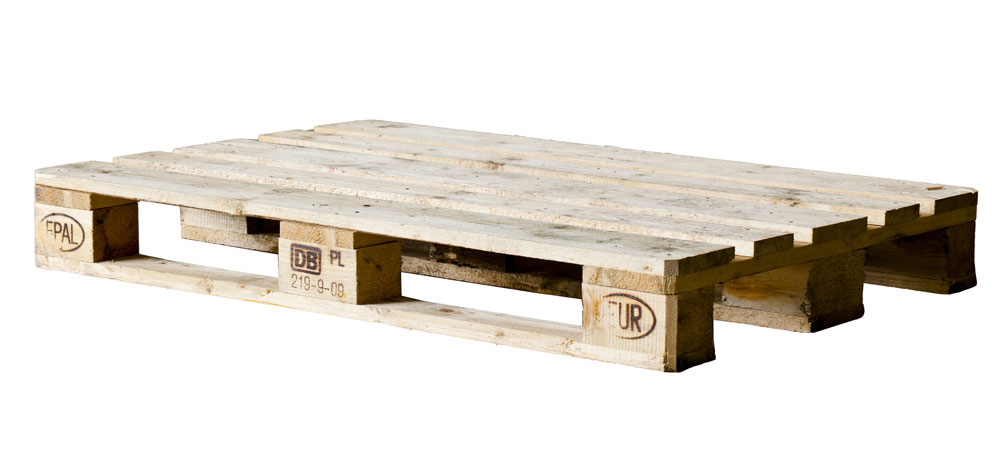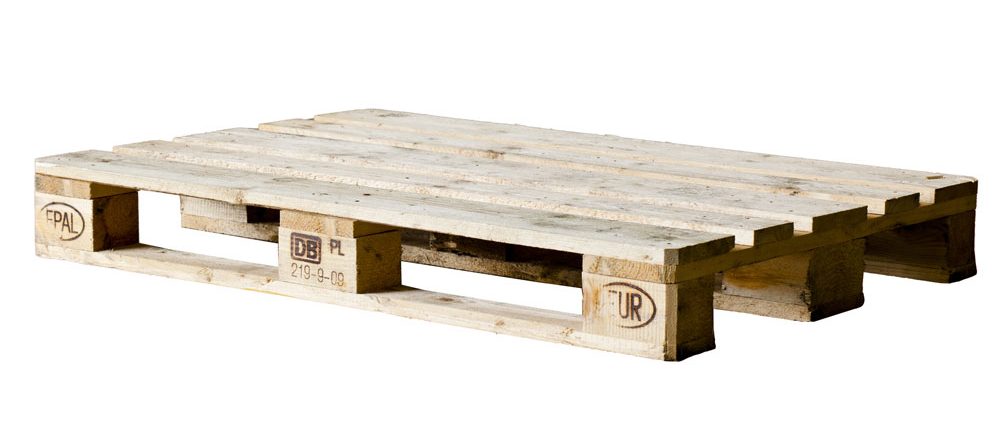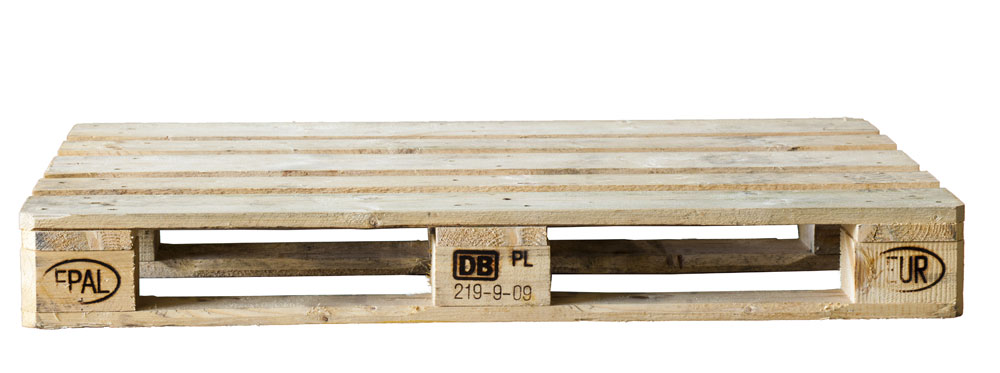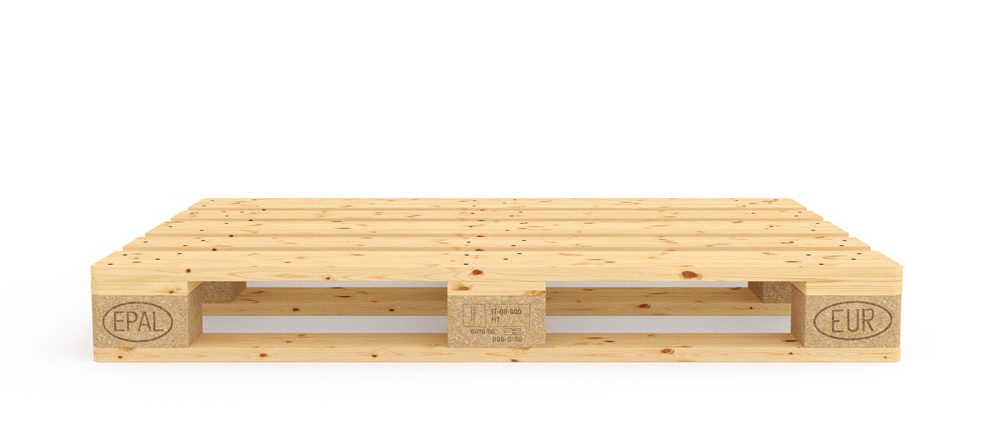Exchangeable repeated-use pallets eligible for the European Pallet Pool
The Euro pallet, also called EUR pallet or EPAL pallet is an exchangeable transport pallet conforming to DIN EN 13698 standard part 1, which can be used within the Europool exchange system worldwide.
Euro pallets are the same all around the world, conforming to UIC (International Union of Railways) standard and thus the EPAL (European Pallet Association) guidelines.
The pallet is also referred to as a four-way pallet as it can be taken up and transported by a forklift or pallet truck from any one of its four sides.
Application/Uses
The pallets are used in all areas of international business. A multitude of materials and products, from foodstuffs to bulk goods is transported on these pallets throughout the world. You can stack crates on them or attach additional stacking frames such as a pallet cage, for example.
Many production and packaging processes throughout industry are standardized to Euro pallets. There is no product available in a supermarket today that has not been transported on a Euro pallet at least once on its way from raw material to delivery to the food or supermarket, illustrating the enormity and importance of this pallet once again.
Composition
The Euro pallet is a repeated-use pallet held together by 78 to a maximum of 81 nails with the standardized dimensions of 120 x 80 x 14.4 centimetres (L x W x H). The area of each pallet measures 0.96 cm². It has a specific weight of 20 to 24 kg (depending on wood moisture content).
Furthermore, the standard not only defines dimensions and weight of these pallets, but also the type of wood, which may only be fir, birch or maple.
Point load and area load may not exceed 1000 kg and 2000 kg respectively. Overloading may lead to damage and reduced capacity, precluding use of the pallet in the Europool exchange system.

Important symbols
A Euro pallet must have the following symbols:
- EUR symbol with oval border on the right block
- company symbol with border on the middle block
- abbreviation of country of manufacture on the middle block
- quality control staple or repair nail below the manufacturing country
- date of manufacture (month, year and manufacturer’s number) on the middle block
- IPPC symbol
- EPAL symbol on the left block (not compulsory)
Import/customs regulations
When transporting goods abroad by sea, rail or air it is vitally important to observe the import regulations for solid wood (IPPC standard). Many countries only allow pallets treated to ISPM 15 (International Standard for Phytosanitary Measures). These quality association import regulations were stipulated by the International Plant Protection Convention (IPPC).
ISPM 15, the guideline governing the shipping of solid wood packaging, sets out measures to protect the forests of the importing countries from the introduction of wood pests from the exporting country.
In accordance with theses guidelines, the wood in a Euro pallet is heat treated with a core temperature of 56 degrees C for at least 30 minutes. This process kills off any pests and larvae present in the wood.
Pallet trading/pallet swapping
Fundamentally, pallets can be exchanged if the exchangeability criteria stipulated in UIC standard 435-4 of the International Union of Railways are met. There are, however, some properties precluding an exchange.
Excluded from the exchange system:
- pallets produced in a non-EPAL-licensed company
- important symbols missing, e.g. EUR symbol
- dirty, damaged or rotten wood
- Euro pallets not repaired to EPAL requirements
Exchangeability can only be re-established in EPAL-licensed companies. A pallet that has been repaired and re-introduced into the exchange system bears the EPAL symbol with oval border on its left corner block.
Downloads
Nordpack FSC certificate (PDF, 852KB)
Nordpack DIN EN ISO certificate (PDF, 272KB)
Product video

By loading the video, you agree to YouTube's privacy policy.
Learn more
Numbers and Data
| Euro pallets at a glance | |||
| Item no. | Dimensions (mm) | Special features | Uses |
| EUR | 1200 x 800 | – | Exchange pallet |
| EUR 2 | 1200 x 1000 | Reinforced substructure | Exchange pallet |
| EUR 3 | 1000 x 1200 | Alternative to the DIN 3 pallet | Exchange pallet |
| EUR 6 | 800 x 600 | alternative to the Düsseldorf pallet or half pallet | Exchange pallet |
CONTACT
Sales Team Accessories from A to Z
Phone: +49 5136 8004-129
Fax: +49 5136 8004-130




